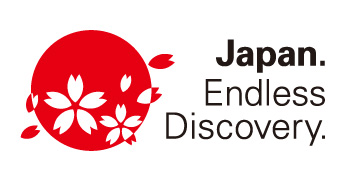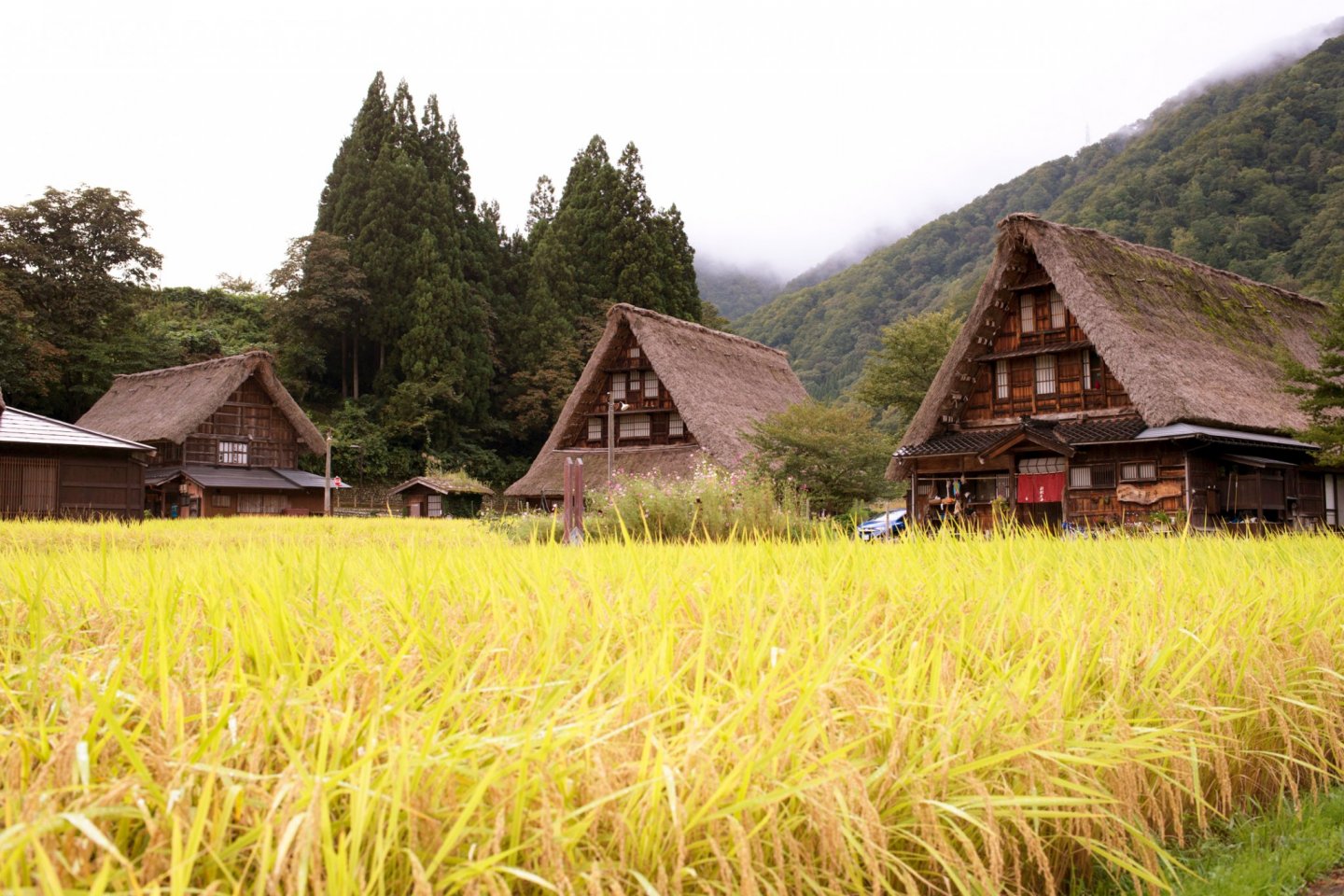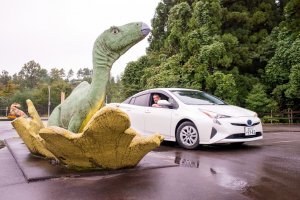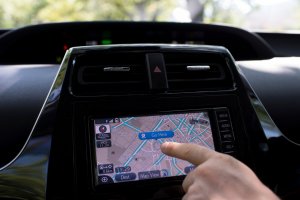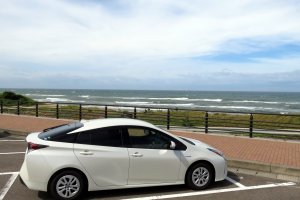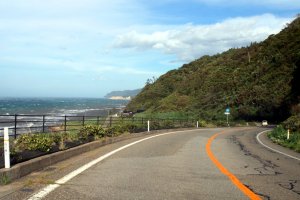Add a Japanese road trip to your bucket list: freely explore the real Japan, distance yourself from big cities and find secret treasures along the way! The coastal Hokuriku region (between Tokyo and Osaka) welcome you with hundreds of kilometers of landscapes and unique, exciting destinations.
Fukui Road Trip
The world has eyes on Fukui as a humanistic and scientific prefecture that will keep its place in history. Travel by car and discover the Japanese countryside, the Port of Humanity Tsuruga Museum, Varve Museum, and Fukui Prefectural Dinosaur Museum without bothering with travel from distant stations.

Tsuruga Port helped rescue 763 Polish orphans from a Russian civil war (1920s) and ±6,000 Jews from Nazi/Soviet persecution (World War Two). Port of Humanity Tsuruga Museum highlights the role of Chiune Sugihara, a Gifu-born consular agent who issued thousands of "Visas for Life" in Lithuania. Expect to be moved by the displays, audio guides, and videos.

World's longest (45m), the varves of Lake Suigetsu serve as a world reference to date objects from the past 70,000 years. Their miraculous existence owes to the absence of direct water flow, life at the bottom, and filling over millennia. The nearby Fukui Prefectural Varve Museum displays these layers of sediment and others from overseas.

Dinosaur Valley Fukui Katsuyama Geopark is Japan's foremost site for the excavation of dinosaur fossils. Drive to Fukui Prefectural Dinosaur Museum to see fossils of regional dinosaurs (e.g. Fukuiraptor, Fukuisaurus, Fukuititan), technicians cleaning fossils, gems, and AR & robot dinosaurs. Reputedly in the world's top 3, this dinosaur museum thrills adults and children alike!


Fukui Prefecture also features the breathtaking Tojinbo Cliffs, Zen temple stays at Eiheiji temple, splendid moss at Hakusan-Heisenji Shrine, and a samurai house in Yokokan Garden.
Ishikawa Road Trip
Ishikawa's designs are inspiring; its capital Kanazawa may begin/end your itinerary (Hokuriku Shinkansen from/to Tokyo). Driving reveals the woody coast and gives access to diverse artists/artisans of the prefecture.

The top spot of Kanazawa, Kenroku-en Garden successfully allies opposites: spaciousness & seclusion, artifice & antiquity, water-courses & panoramas. Nearby, Myoryu-ji (the ninja temple) has secret doors, and Nomura-ke Samurai Residence has an unusual tearoom overlooking its garden and an exhibit featuring golden boxes.


Many gold-plating activities are available in Kanazawa; I enjoyed one at Katani. In the Noto Peninsula, you may learn from Japanese masters: wood & lacquer at Wajima Kirimoto (creator for international hotels) and expressive calligraphy at Atelier Tokarin (with natural brushes and German assistants), etc.


The 1,300-year-old Natadera Temple fuses tradition and modernity. An 8m-tall golden statue of 1,000-armed Kannon is surrounded by artistic walls, including Kutani local porcelain, and bathed in ever-changing colors representing beneficence over the whole universe. The buildings, gardens, green tunnel, sounds of water, birdsong, and more may keep you busy for hours. The priests hope all visitors, Buddhists or not, will leave healed.


In Ishikawa Prefecture, you can also drive over 8km on the sands of Chirihama Beach (unique in Japan), photograph Godzilla Rock, and admire Ganmon Sea Cave.
Toyama Road Trip
Be seduced by rare sea-and-mountain sights in Toyama, and experience self-reflection in its secluded communities. Roads are your only way to explore Toyama Bay, Gokayama villages, and Oiwa-san Nisseki-ji.

Toyama Bay is recognized as one of the most beautiful bays in the world. On a clear day, you can walk from the park at Amaharashi Roadside Station, feel the waves on the beach, and look toward the tiny island 50m off the coast. Admire the 3,000-meter-high snowy Tateyama mountain range beyond! Hikers may want to see the opposite view from Mount Tate (Tateyama), one of Japan's Three Holy Mountains (with Mounts Fuji & Haku).

Japan may have modernized but the secluded Gokayama region remained traditional. Stretch your legs at Suganuma or Ainokura, hamlets registered as UNESCO World Heritages for their houses with steep roofs designed against heavy snowfalls, some built over 300 years ago.

Oiwa-san Nisseki-ji is a regenerative experience. The sights, sounds, and smells of the forest and falls will welcome you during spiritual activities: draw a Wisdom King while making a wish in the temple, pray to the 88 Buddha & Bodhisattva during a forest walk in pilgrim outfit, and meditate under a waterfall! Savor a plant-based meal and sleep on tatami mats at the nearby inn Dangoya (free parking). Lucky "pilgrims" like me may see a wild antelope!


Toyama Prefecture also features Japan's tallest dam (Kurobe - 186m high), Uchikawa (old fisherman district), and the "world's most beautiful Starbucks" in Kansui Park.
Gifu Road Trip
The ancient lifestyles and stories still alive in Gifu Prefecture are mind-opening. Driving allows you to help forge a Japanese sword in Seki City and admire Shirakawa-go before the arrival of tourist buses.

Unique in Japan, Hamonoya Sansyu shop lets you hammer metal during an early sword-making stage with 25-26th generation swordsmiths! Fans of samurai/ninja, swords and crafts, will remember this experience all their life and will cherish the certificate received afterward.

Registered as a UNESCO World Heritage for its gassho-zukuri houses like Gokayama, Shirakawa-go is a famous village at the foot of Mount Haku. Drive to arrive after the departure of tourist buses, sleep in a historic house, and enjoy the peaceful atmosphere under the stars!

In Takayama, experience Japanese folklore at the Dekonaru-za show based on a regional myth! An English-speaking storyteller explains between fights, shishimai & umbrella dances, drums & flutes performances. If you wish, interact with the performers during the show then get photographed together.


Other notable destinations in Gifu Prefecture include the Tono area for cycling, Gujo city for fake-food making (the first historic town in Japan for this), and Gero Onsen, a hot spring resort with free foot/hand baths and even a public mixed bath.
No worry for drivers
Car rental companies in Hokuriku & Shoryudo are used to foreign travelers. Reserve, bring your international driving license, learn the Japanese traffic rules, and ask the staff to switch your car navigation system to English. You just need to remember to drive on the left!

Here, the roads are safe, well-maintained, and typically without traffic jams. Signs in English are common and there's plenty of free/cheap parking in the countryside.


Drivers wishing to reduce their carbon footprint can rely on chargers for electric cars in Fukui, Gifu, Ishikawa, and Toyama prefectures. For example, the Noto Peninsula has 33 EV charging spots powered by renewable energy sources thanks to Noto Smart Drive Project.

Great for diverse travelers
Vegans and vegetarians need freedom to fully enjoy Japan. With a car and careful planning, they can savor breakfast buffets at hotels and diverse plant-based dishes at exceptional restaurants. For vegans, I recommend a Japanese lunch at Dangoya Inn (Toyama), French lunch with ingredients of the day at L'Atelier De Noto (Ishikawa), Japanese dinner at Suimeikan Hotel (Gifu), and Japanese dinner at Hyakurakuso Hotel (Ishikawa). Muslims, Jews, and others should detail their requirements before traveling to get exactly what they want; see also the Toyama Muslim-Friendly Restaurants website.
Kids enjoy the dinosaur museum, ninja temple, Dekonaru-za show, and gassho-zukuri villages. Fun activities like calligraphy and gold-plating are easy to reserve but cycling is problematic due to narrow roads.

Groups with low-mobility travelers will appreciate the well-designed facilities of the dinosaur museum, flat paths of Kenroku-en Garden, views from Amaharashi Roadside Station and nearby seaside path, Dekonaru-za show, and Ainokura village (wheelchair available at the entrance).

Travel tips
Plan:
- Rent a narrow car to better navigate streets.
- Create your itinerary based on Japan's low speed limits.
- Choose the right season. Some destinations are gorgeous with snow (e.g. Yuki-no-otani) but some roads close. Fukui's crab is best eaten fresh in winter!

Be spontaneous:
- Adapt your plans to weather forecasts.
- Be on the lookout for events, cute castles (e.g. Maruoka Castle)...
- Taste local food.




Make the best of your evenings:
- Relax at hot springs after driving e.g. great open-air bath at Awara Onsen Grandia Housen Resort (Fukui).
- Discover countryside nightlife with locals e.g. Dekonaru Yokocho (Gifu) and Awara Onsen Yataimura Yukemuri Yokocho (Fukui).
- Try unusual lodgings e.g. Oyatsu Old Warehouse (Toyama).
- Admire the sunsets and stars.




Enjoy the adventure, relax and create your unique memories in Hokuriku and Shoryudo. You will have great stories to share with your loved ones back home!
.center-logo img { margin: 0 auto; }
